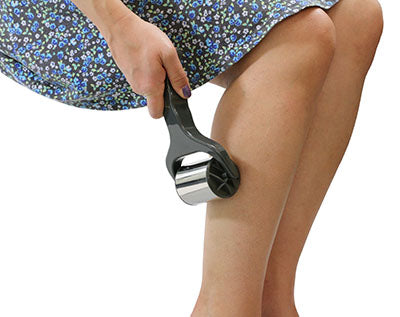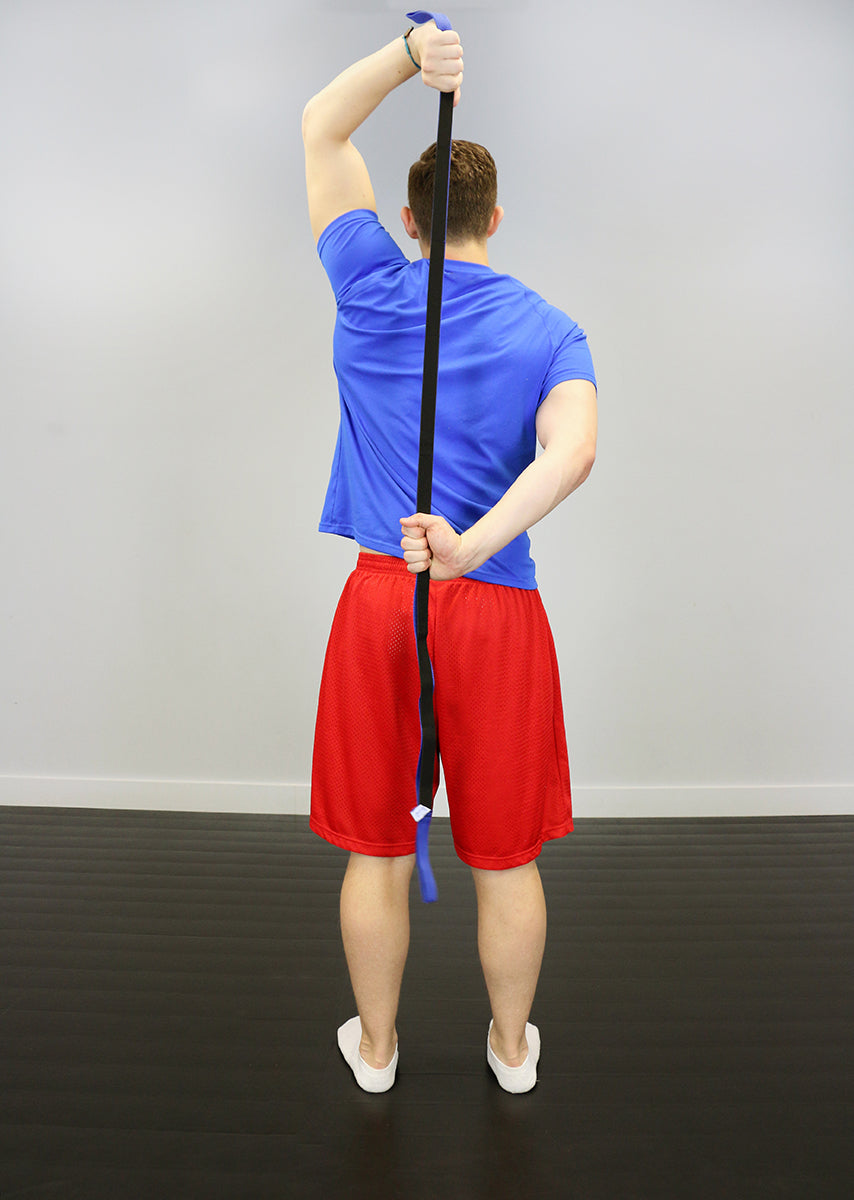
The definition of a multisport athlete and a single sport athlete are about as simple as can be. Sports are seasonal in nature. There are fall, winter, spring, and summer sports. Summer sports vary by state. For example, my home state (Iowa) held baseball and softball during the summer, whereas Ohio currently holds organized baseball and softball during the spring. So, regardless of how many seasons your state association holds, a multisport athlete would be an athlete who participates in two or more sports during the year. Perhaps they play a fall and winter sport. Or a winter and spring sport. In contrast, a single sport athlete focuses on one sport all year round. This is also known as specialization. The application of a multisport athlete and a single sport athlete is also very simple. When a multisport athlete is in season, their focus and energy is devoted to training, practicing, and competing within that said sport. The other sports are put aside. If an athlete is not competing year-round in sports, their off-season is usually devoted towards developing for one primary sport with the possibility of some time being dedicated to a secondary or tertiary sport. Typically, the sport most trained for in the offseason is the sport that the athlete is the best at, enjoys the most, and is more likely to compete in at the next level (college).
RECENT: Are Athletics Healthy for You?
A single sport athlete, in contrast, is devoted year-round towards improving themselves in one single sport. This is why they are called "specialized" athletes. Depending on the sport, the specialized athlete competes during the traditional middle or high school season and then either trains for the next season or competes in additional leagues throughout the year. I know. That was extremely redundant and obvious. It pained me just as much to write those definitions as it probably did for you to read them. If these concepts are seemingly so simple, then how did so many parents, coaches, athletes, and trainers manage to mess it up? Why is the multisport athlete of today more burnt out and fatigued as ever? To give you some insight, here is what I hear from the typical athlete or parent: "Athlete Z" is a multisport athlete. Athlete Z plays football, basketball, and baseball. During football season, they practice and compete in football and have one training session with a personal trainer during the week, and then attend pitching practice and a second workout with their trainer on the weekend. During basketball season, they are playing basketball, lifting for football, training speed work or football skill work with their trainer, and going to hitting, catching, or pitching practices. During baseball season, they are playing baseball, lifting for football, going to shootarounds or possibly even competing in spring basketball leagues, and doing additional speed and agility work or training skill-specific work for football. Today's athletes are not multisport athletes. They are athletes trying to specialize in multiple sports. They are competing, training, and practicing in multiple sports all year round. As the age-old saying goes, they are trying to have their cake and eat it too.

Ievgen Onyshchenko © 123rf.com
So, what happens when a youth athlete is specializing in multiple sports? What differences are we seeing between the multisport athlete of yesterday and the multi-specialization of today's athlete? What are the problems associated with this new approach to youth athletics? What roles do we as coaches, trainers, and parents have in its perpetuation? What role do we have in its prevention?Physical Health
As an athlete, I have had a long history of injuries–both minor and severe (although knock on wood, never severe enough to require surgery). In athletics, injuries are baked into the cake. If you play sports long enough, you'll probably get injured. So, are there any real differences in multi-specialized athletes when it comes to injury? Absolutely. Today's youth athlete is experiencing chronic injury and overuse injury at a much younger age. These include muscle strains, shoulder, spine, hip and other joint pains, and stress reactions/fractures of bones such as those in the lower leg and lower back. Again, it's not so much the occurrence of these injuries that are alarming–it's the fact that they are happening so early. The advantage of being a multisport athlete is being able to give your body a break. Giving the body a break is one of the most important aspects of athlete development. Simply moving to a different sport allows the athlete to take a break from the stresses of one sport while at the same time pushing their body safely by spending time in a different sport. This gives time to allow the body to return to baseline, build skillsets such as coordination and reaction in different environments, as well as spend time moving in different planes to avoid functional imbalances in the body. Conditions like stress reactions and overuse strains are signs of overtraining and dysfunctional movement patterns. This indicates that the athlete is either being subject to excessive strain without adequate rest and/or their nervous system has adopted compensation patterns in their movement that are creating abnormal strain on the body. With athletes having multiple practices and training sessions a day, it's no wonder we are seeing these chronic injuries showing up five years earlier than normal. They are simply not getting enough time to recover, meaning their body has less work capacity for that next training session. This can easily perpetuate the development of compensation patterns, as the body is designed to adapt and survive. Put that fatigued athlete into a training session or practice and stress him to perform, and his nervous system will find a way to make it through that session–even if that means recruiting suboptimal movement patterns to do it.Mental Health
The mind-body link is a widely accepted and documented relationship, and simply speaks to the highly integrated nature of our body. What is in your mind, is in your body, and what is in your body is in your mind. It's a two-way street. In application of these principles, this means that an athlete who is over worked physically will also have changes in mood, attention, and other executing mental tasks. Overtraining is highly associated with irritability, fatigue, inability to sleep, etc. We also see a huge amount of burnout, depression, and identity issues in youth athletics. These problems are notoriously caused by expectations placed on the youth athlete by the influential figures in their lives (parents, coaches, trainers, etc.). Recognize the possibility that your moody teen athlete may not be lazy or unmotivated, but instead could be manifesting signs of overtraining. Although I'm all for mental toughness, it's not a one size fits all application.The Role of the Parent
These situations of overtraining, burn out, and injury are, in most cases, not the child's fault. Children are still dependents, and that means someone else is pushing them into this multi-specialized environment, deciding their schedules, shuttling them around, and demanding more of them. This is where the role of the parent comes in. I'm not going to tell someone how to coach, train, or raise their kids (as I would expect the same treatment towards me), and generally, I fall into the line of keeping a kid disciplined and spending their free time improving themselves. However, many of these above issues can be avoided by simply paying attention, asking questions, and backing the athlete off when needed. No one is recruiting your middle school or even freshman child to play in college. You can let your child be a kid while also keeping them active in sports. We have all seen the out of control parents–I'm not going to talk about that. As a parent, I think the role here is to make sure you are paying attention to your kid, their affect, and ask them how they are feeling. Ironically enough, building a trusting relationship and making the time to hone in on how your kid feels will help them perform better. The more you pay attention to the little details and ask questions, the easier it will be to recognize if your kid is getting overloaded by their current workload and need a break or if they are being lazy and need a kick in the ass.The Role of the Coach
Coaches hold a very important role in the direction of youth athletics for a few reasons. First, they are usually the ones in the driver's seat when it comes to how they direct practice duration, frequency, and intensity. Secondly, a coach is often involved when prescribing "voluntary" athlete participation in practices, leagues, and skill-specific trainers. As a coach, your role within this process is to recognize the state of your team and take it upon yourself to understand the effects of training on the body. If not, you need to have someone on your staff that does understand training effects who reports directly to you. I understand that most high schools and middle schools are not able to have full-time strength coaches, as we see in collegiate athletics. That is neither expected nor required to still be able to execute training and practices that are beneficial to your athletes. Coaches attend clinics to develop strategy, communication, and leadership–so why not spend some time learning how to better train your athletes? I teach seminars on almost a monthly basis and have seen the effects of coaches spending time stepping out of their comfort zone to learn how to manage their athlete's physical and mental health. It is an awesome experience for the coaches and directly leads to improved performance of their athletes. Another way to play a role in managing the multi-specialized athlete is to sit down and have conversations with them about the subject. Most coaches are aware of the other sports their athletes are in and whether or not they are burning the candle at both ends during the season. Having a conversation with the athlete, parents, or even other coaches and trainers that are involved is a great way to ensure that the needs of the athlete are coming first. If an athlete is overloaded with work, they should be persuaded to prioritize for the season. If not, all sports that the athlete is involved in will be affected as well as the athlete's health.The Role of the Strength Coach/Private Trainer
Private training facilities, coaches, and competitive leagues have grown incredibly over the last decade–and for good reason. For a young athlete to have access to personalized products and services within their sport is hugely important to their development. Where a position coach is hindered by the amount of one on one attention they can give, and a school may not have the ability to hire a full-time strength coach or fund a multi-million-dollar facility, the private sector can provide that and more. Having said that, to quote Buddy Morris, "Personal trainers can be more like personal terrorists." Why? Because trainers (including personal trainers, private strength coaches, and private coaches) are unpredictable and are often only focused on their personal and financial gain rather than the direct needs of the athlete. Now, before the keyboard warriors come out to object, let me explain why this is absolutely true. Remember back to the definitions of multisport and specialization that we so thoroughly and painfully covered. Then ask yourself a few questions. Since I am a private offensive line coach, I will answer these questions as well. 1. Should I be training my athletes year-round? No. This question hits a few different scenarios. First off, if you're an athlete or parent of an athlete who is spending time with a trainer all year round, you need to fire them. There is almost no reason to be training while in-season. The only two reasons I can think of for needing a personal trainer or strength coach are for recovery/mobility sessions (which is basically paying someone to babysit your athlete) or if your school is not lifting at all during the season. For my athletes, we will break four times throughout the year. Once after football season during the holidays, once between winter and spring training, and then once more for summer camps. That means for four to five months out of the year, I am not training my athletes. As I begin to work more strength training into my line of services, this will likely shrink to about three months out of the year. Furthermore, all of our physical work is done in the off-season, and at most are two sessions. We spend one additional session watching film. During the fall season, we are only watching film and, if needed, will walk through technique errors that we see. We do this because once my athlete is in season, all their time and energy need to go into improving field performance. Adding more practices makes no sense. My job is to build the skill of the athlete in the off-season. If they need more practice in-season, then I have failed to deliver. This example holds true for any sport specialist (throwing, pitching, golf swing, wrestling, etc.). If this template of go hard, back-off, go hard is not happening with your trainer, they are either shitty at their job or just want your money. It is very rare for an athlete to improve speed or strength while in-season. And if they are, it's likely because they backed off and shortened their training. Additionally, there has been a recent rise in "specialized personal trainers" who have positioned themselves as gurus in foot speed, agility, sprinting, etc. Of course, those are attributes that matter, but again, your athletes should not be working on building linear speed and agility nine months out of the year. If this is the case, there are other attributes not being built, and you are working on creating a speed specialized athlete. 2. Should my athletes all be on the exact same program? If you have the ability to differentiate, you should. A sprinter needs different training than a thrower, just like a wide receiver needs different training than a lineman. Now, the base of the program can be founded on the same principles, but the overall structure will likely change based on the needs of the athlete. A lot of trainers do a great job of mitigating this by having specific sports work together and then slightly modifying based on the needs of the position. This is a great way to train the athlete individually while still allowing for group training. What becomes problematic is having the same workout day in and day out for all athletes. For example, if we are focusing on linear speed, it makes absolutely no sense for an offensive lineman to run past a certain distance. For conditioning purposes, maybe, but that's not the point of speed work. It is also not difficult to modify speed work based on the athlete in a group. 3. Do I communicate with parents and other coaches who are concurrently involved with my athletes? Communication is, by far, the most important aspect of managing the athlete. One of the biggest reasons supporting staff do not trust outside trainers is due to a lack of trust and understanding–often because the trainer has never once reached out to educate, explain, or relay what they are doing with an athlete. From a business standpoint, this also makes no sense as it's a great opportunity to build a relationship with a program. I make sure to spend time visiting and conversing with support staff for all athletes that I am involved with – whether as a physician or coach. Athletics are very tribal. Not in a good ole boys club way, but in a brotherhood kind of way. A lot of time, effort, and pride goes into building a program and you have to earn your way into that circle. Most of the time, this is as simple as putting the time and effort in to show that you care and are willing to be as selfless as the people who built the program. Being present and contributing can go a very long way. If you are looking to show that you are different than other trainers, show up to practice, spend time volunteering, and find ways to give back to these programs. Relationships like these take time to build, but the effort you put into a program will not go unnoticed. Individually, communication also allows you to get the full scoop on what the athlete is currently going through. Youth athletes are notorious for forgetting what they had for lunch two hours ago, let alone remembering when they've had practice, how they felt after the last workout, how much sleep they're getting, or even their schedule for the next day. This is where communicating with the parents helps a lot as they are again usually the person whom the dependency on this information falls. Even if you are getting information from an athlete, it allows you to double-check that information and build a report with both the athlete and the parent that you care. If the only time you've talked to the parent was when their child signed up, that's a huge problem. And if this athlete is getting dropped off at your facility after their third practice for the day, that is extremely important information for you to possess, which brings us to our final question. 4. Am I willing to send my athlete home or reduce their frequency if they are being overworked? Even if it may cost me money? The only thing you can control is your environment. And sometimes, that means doing the right thing when no one else will. In terms of managing the athlete, this means being flexible. If you are a trainer with a multi-specialized athlete that is completely overworked, it no longer matters what is on the piece of paper or tablet for today's training session. Your job is to protect and help the athlete. If that means completely deloading the training session, having a talk with the parents, or recommending a change in scheduling, that is exactly what needs to happen. I cannot tell you how many times I've walked into an o-line session and just by watching my athletes move in warm-ups or "get-off drills" (first and second steps), that the training session was going to make a hard left real quick. From there, I slow the session down and ask how the day and week went. Low and behold, there were multiple training sessions in the day, my athlete just came from a heavy lower body day, or something is tighter than usual. Sometimes that's understandable and just the way it is. Other times I want to wring another coach's neck and ask him what the hell he is doing. But at that moment, the best move for that athlete is to ramp down and recover. So that's what we do. And at that moment, I am making a better athlete. Not because I pushed him through and got some good reps in, but because little by little, I am changing his outlook on how to train his body and placing importance on paying attention to the signs that his body is telling him. On this given day, that is a more important lesson than where to fit an aiming point on a pad. That's also more important than the ego I have about my program or someone giving me money to train their kid three times in a week vs. two times or not at all for a month. Regardless of your position with the athlete, they place a lot of trust in you to help them perform their best. When it comes to being part of an athlete's circle, that should be the most important goal. The reality is that this is not happening. Too many kids are being pushed by their circle to do multiple sports all year round, and it is truly detrimental to the health of the athlete. I understand wanting to compete and be the best, but there is a balance to that process, and there is longevity to that process. It's not about pushing as hard as possible. It's about pushing as smart as possible and being efficient with your time and energy. Remember, the body needs to recover to perform. And every stress you put on the body must be recovered from. Athletes have long careers if they put their body under the least amount of strain necessary to elicit a response. Today's youth athletes spend more time training than many professional athletes. If that doesn't make you question why, then I don't know what will.




































































